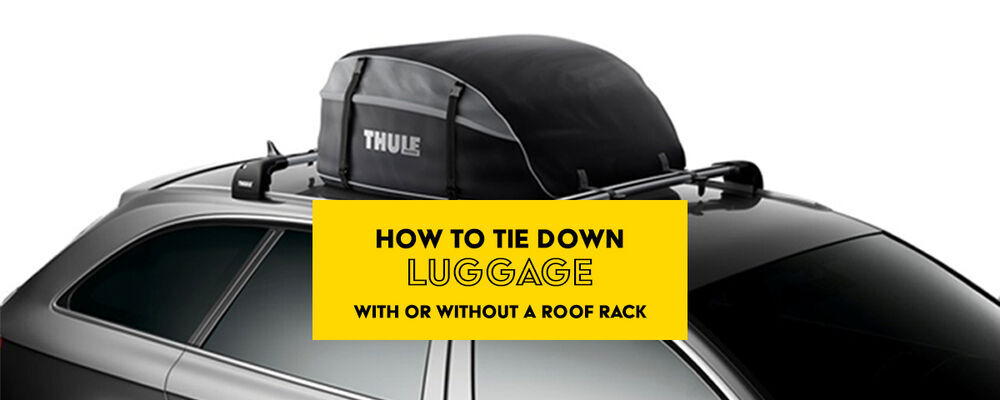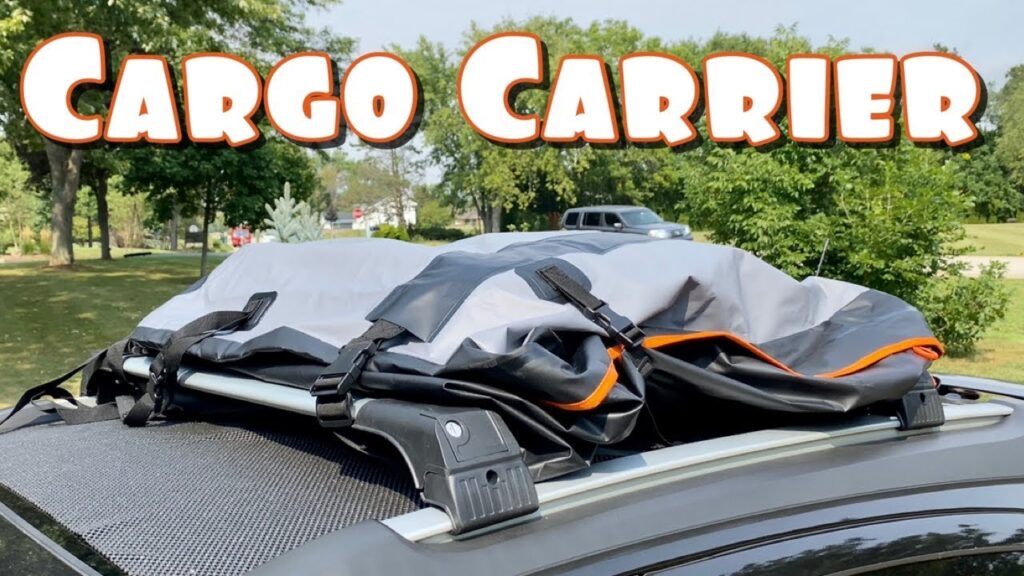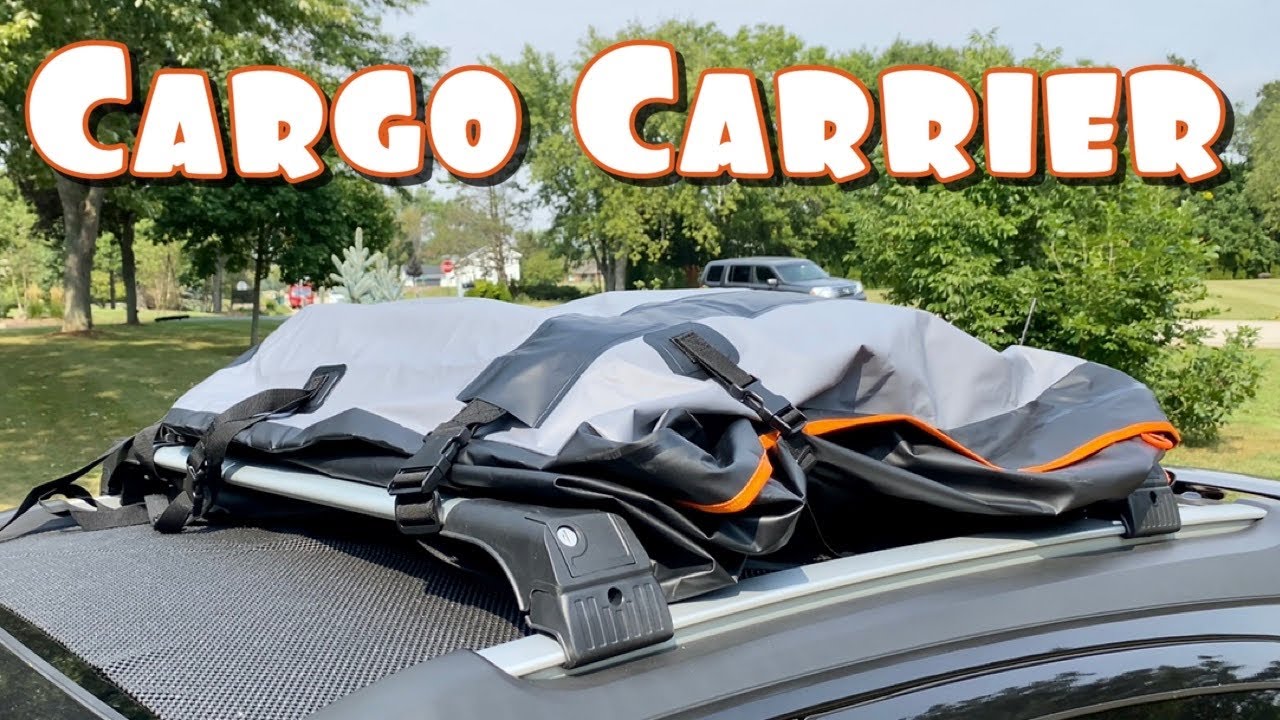Hey there! Looking to learn how to safely secure a sleeping bag on a roof rack? Well, you’ve come to the right place! In this article, we’ll be sharing some useful content tips that will help ensure your sleeping bag stays safely in place during your outdoor adventures.
Securing a sleeping bag on a roof rack may seem like a simple task, but there are some important details that you need to consider to ensure a secure fit. From choosing the right type of roof rack to properly tying down your sleeping bag, we’ll cover it all. Stay tuned, and by the end of this article, you’ll be equipped with the knowledge you need to confidently hit the road with your sleeping bag securely strapped to your roof rack. So, let’s dive in and discover the tips and tricks for safely securing a sleeping bag on a roof rack!

This image is property of www.etrailer.com.
Tips for Safely Securing a Sleeping Bag on a Roof Rack
Are you planning a camping trip or a road trip adventure? If so, you may be considering using a roof rack to transport your belongings, including a sleeping bag. Securing a sleeping bag on a roof rack requires careful preparation and attention to detail to ensure a secure and hassle-free journey. In this article, we will provide you with some useful tips on how to safely secure a sleeping bag on a roof rack, so you can enjoy your trip with peace of mind.
Consider the weight limit of your roof rack
Before you begin loading your sleeping bag onto the roof rack, it is crucial to consider the weight limit of your roof rack. Each roof rack has a specific weight limit that you need to adhere to in order to prevent any damage or accidents. Exceeding the weight limit can put unnecessary strain on your vehicle, affecting its stability and handling. Therefore, it is important to check your vehicle’s manual or consult with the manufacturer to determine the weight limit of your roof rack.
Select a roof rack with secure attachment points
When choosing a roof rack, it is essential to select one that has secure attachment points. These attachment points act as anchors for securing your sleeping bag and other items on the roof rack. Make sure that the attachment points are sturdy, well-built, and capable of withstanding the weight and pressure that will be applied to them during transportation.
Ensure the roof rack is compatible with your vehicle
In addition to secure attachment points, it is equally important to ensure that the roof rack you choose is compatible with your vehicle. Different vehicles have different roof configurations, and not all roof racks are suitable for every vehicle. Before purchasing a roof rack, check with the manufacturer or a trusted professional to ensure that it is compatible with your vehicle’s make and model. This will ensure a proper fit and enhance the safety of securing your sleeping bag on the roof rack.
Preparing the Sleeping Bag
Now that you have chosen the right roof rack for your vehicle, it’s time to prepare your sleeping bag for transport. Properly preparing your sleeping bag will not only keep it in good condition but also prevent any loose items or debris from causing damage while on the road.
Roll up the sleeping bag neatly
Start by rolling up the sleeping bag neatly. Begin by folding the sleeping bag in half lengthwise and then tightly rolling it from one end to the other. This will help to minimize its size and make it easier to secure on the roof rack. Make sure that the sleeping bag is rolled up tightly to prevent it from becoming loose or getting damaged during transportation.
Remove any loose items or debris from the sleeping bag
Before securing the sleeping bag on the roof rack, ensure that there are no loose items or debris inside the bag. Check for any small objects or loose zippers that may cause damage to the sleeping bag or other items during transit. It is crucial to remove any loose items or debris to ensure the safe and secure transportation of your sleeping bag.
Wrap the sleeping bag in a protective cover
To provide an extra layer of protection for your sleeping bag, consider wrapping it in a protective cover. A protective cover can help shield your sleeping bag from dust, dirt, and moisture, keeping it clean and dry throughout your journey. Ensure that the protective cover is securely fastened to prevent it from coming loose while on the road.
Positioning the Sleeping Bag on the Roof Rack
Now that your sleeping bag is prepared and ready for transport, it’s time to position it on the roof rack. Proper positioning of the sleeping bag will help ensure its stability and prevent any damage or accidents during the journey.
Place the sleeping bag in the center of the roof rack
When positioning the sleeping bag on the roof rack, it is important to place it in the center. This will help distribute the weight evenly and maintain the balance of your vehicle. Placing the sleeping bag in the center will also minimize the risk of it shifting or becoming loose during transit.
Position the sleeping bag horizontally or vertically depending on the rack design
The position of the sleeping bag on the roof rack will depend on the design of the rack itself. Some racks are better suited for horizontal placement, while others are more suitable for vertical placement. Refer to the manufacturer’s instructions or consult with a professional to determine the most appropriate position for your specific roof rack.
Ensure the sleeping bag is evenly distributed
Once you have positioned the sleeping bag on the roof rack, make sure that it is evenly distributed. This means that there should be an equal amount of the sleeping bag on each side of the roof rack. Even distribution of the weight will help maintain the stability and balance of your vehicle, especially during turns or when driving at higher speeds.
Securing the Sleeping Bag with Straps
After positioning the sleeping bag on the roof rack, it’s time to secure it using high-quality and durable straps. Straps are an essential component for safely securing your sleeping bag and preventing any movement or shifting during transportation.
Use high-quality and durable straps
It is important to use high-quality and durable straps specifically designed for securing loads. Avoid using cheap or flimsy straps, as they may not be able to withstand the weight and pressure of your sleeping bag, which could result in accidents or damage. Invest in sturdy and reliable straps that are capable of providing the necessary strength and support.
Wrap the straps around the sleeping bag and roof rack bars
To secure the sleeping bag, start by wrapping the straps around the sleeping bag and the roof rack bars. Ensure that the straps are pulled tight to hold the sleeping bag firmly in place. Take care to position the straps in a manner that does not obstruct the opening of your vehicle’s doors or create any additional safety hazards.
Tighten the straps securely but not too tight
When tightening the straps, it is important to find the right balance between securely fastening the sleeping bag and not overtightening the straps. Over-tightening the straps can put excessive pressure on the sleeping bag or damage the roof rack. On the other hand, if the straps are not tight enough, the sleeping bag may shift or become loose during transportation. Gradually tighten the straps, periodically checking the stability of the sleeping bag, until it is secure and immobile.
Using Additional Tie-Downs for Extra Security
While straps are the primary means of securing your sleeping bag on the roof rack, you may also consider using additional tie-downs for extra security, especially during windy conditions or long journeys.
Consider using additional tie-downs for windy conditions
If you anticipate encountering strong winds during your journey, it is advisable to use additional tie-downs to provide extra security for your sleeping bag. Wind can exert considerable force on the roof rack and the items secured on it, so using tie-downs can help prevent any movement or shifting.
Attach the tie-downs to secure points on the roof rack and vehicle
To use additional tie-downs, attach them to secure points on both the roof rack and your vehicle. These secure points can include loops, eyelets, or designated anchor points. Ensure that the tie-downs are tightly fastened and provide sufficient tension to prevent any movement of the sleeping bag.
Regularly check the tension of the tie-downs during the journey
During your journey, it is crucial to periodically check the tension of the tie-downs. Vibrations, changes in weather conditions, or other external factors may cause the straps and tie-downs to loosen over time. Checking the tension regularly will help maintain the stability and security of your sleeping bag throughout the journey.
Protecting the Sleeping Bag from the Elements
Transporting a sleeping bag on your roof rack exposes it to various weather conditions, including rain, snow, and sunlight. To protect your sleeping bag from the elements and ensure its longevity, it is important to take certain precautions.
Cover the sleeping bag with a waterproof tarp or bag
To protect your sleeping bag from rain or snow, cover it with a waterproof tarp or bag. This additional layer of protection will prevent moisture from seeping into the sleeping bag and potentially causing damage. Make sure that the tarp or bag is securely fastened to the roof rack to prevent it from coming loose while on the road.
Ensure the tarp or bag is securely attached to the roof rack
The waterproof tarp or bag should be tightly secured to the roof rack to prevent it from flapping in the wind or becoming loose. Use additional straps or bungee cords to fasten the tarp or bag to the roof rack, ensuring it is securely attached and will not be dislodged while driving.
Monitor weather conditions and adjust protection if necessary
Throughout your journey, keep an eye on the weather conditions. If the forecast indicates heavy rain, hail, or any severe weather, consider adjusting the protection for your sleeping bag. This may involve adding an extra layer of tarp or wrapping the sleeping bag in a waterproof bag for additional protection. Regularly monitor the condition of the tarp or bag to ensure it remains secure and intact.
Inspecting the Secured Sleeping Bag
Before hitting the road, take a few moments to thoroughly inspect the secured sleeping bag. This inspection will help confirm that everything is properly secured and ready for transportation.
Double-check the straps and tie-downs for tightness
Check that the straps and tie-downs are tightened securely. Gently tug on them to ensure they are holding the sleeping bag firmly in place. If any straps or tie-downs are loose or show signs of wear and tear, replace them before embarking on your journey.
Ensure the sleeping bag is stable and not at risk of shifting
Ensure that the sleeping bag is stable and does not show any signs of shifting or movement. Shake the roof rack gently to see if the sleeping bag remains in place. If any adjustments are needed, make them before departing.
Look for any signs of damage or loose attachments
Inspect the sleeping bag, straps, tie-downs, and any other attachments for any signs of damage or deterioration. Check for loose stitches, frayed straps, or any other issues that may compromise the safety and security of the sleeping bag during transit. If you notice any problems, address them promptly by making repairs or replacing damaged components.
Driving with the Sleeping Bag on the Roof Rack
Now that you have properly secured your sleeping bag on the roof rack, it’s essential to drive with caution and observe certain driving practices to ensure a safe journey.
Observe the speed limit and drive cautiously
Adhere to the speed limit and drive cautiously when transporting a sleeping bag on the roof rack. The additional weight and height of the sleeping bag can affect the handling and stability of your vehicle, so it’s important to drive defensively and avoid sudden stops, starts, or sharp turns.
Avoid sudden starts, stops, and sharp turns
As mentioned, sudden starts, stops, and sharp turns can put undue stress on your vehicle and the roof rack. These actions can cause the sleeping bag to shift or become loose, resulting in potential damage or safety hazards. Drive smoothly and avoid any sudden maneuvers that can compromise the stability and security of the sleeping bag.
Check the rearview mirror for any signs of movement or instability
Periodically check your rearview mirror during your journey to ensure that the sleeping bag remains stable and secure on the roof rack. Look for any signs of movement, flapping, or instability. If you notice any issues, find a safe place to pull over and make the necessary adjustments to secure the sleeping bag properly.
Unloading the Sleeping Bag from the Roof Rack
After reaching your destination, it’s time to unload the sleeping bag from the roof rack. Follow these steps to ensure a safe and efficient unloading process.
Carefully remove the straps and tie-downs
Start by carefully removing the straps and tie-downs from the sleeping bag and the roof rack. Loosen them gradually and take care not to let them snap back, as they can cause injury. Collect and store the straps and tie-downs for future use.
Gently lift the sleeping bag off the roof rack
With the straps and tie-downs removed, gently lift the sleeping bag off the roof rack. Ensure that you have a firm grip and maintain control throughout the process. Avoid dragging or scraping the sleeping bag against the roof rack, as this can cause damage to the bag or the vehicle.
Store the sleeping bag in a dry and safe location
Find a dry and safe location to store the sleeping bag until it is needed again. Avoid exposing the sleeping bag to direct sunlight, moisture, or extreme temperatures, as these factors can affect the quality and durability of the bag. Proper storage will help maintain the integrity of the sleeping bag for future use.
Conclusion
Safely securing a sleeping bag on a roof rack requires careful preparation and attention to detail. By considering the weight limit of your roof rack, selecting a rack with secure attachment points, and ensuring compatibility with your vehicle, you lay the groundwork for a secure and hassle-free journey.
Preparing the sleeping bag by rolling it neatly, removing any loose items or debris, and wrapping it in a protective cover further enhances the safety and longevity of your sleeping bag. Proper positioning on the roof rack, securing with high-quality straps, and using additional tie-downs when necessary provide the necessary stability and prevent any movement or shifting during transportation.
Protecting the sleeping bag from the elements by covering it with a waterproof tarp or bag, and regularly monitoring the condition and adjustment of the protection, guarantees its safety and long-term usability. Conducting a thorough inspection of the secured sleeping bag and driving with caution, avoiding sudden starts, stops, and sharp turns, ensures a safe journey for both you and your sleeping bag.
Finally, when unloading the sleeping bag from the roof rack, carefully removing the straps and tie-downs, gently lifting the sleeping bag off the roof rack, and storing it in a dry and safe location promotes the sleeping bag’s longevity for future use.
Remember, always prioritize safety on the road, and adjust precautions according to specific circumstances. By following these tips, you can confidently and safely transport your sleeping bag on a roof rack, ready to embark on your next adventure.

This image is property of i.ytimg.com.

